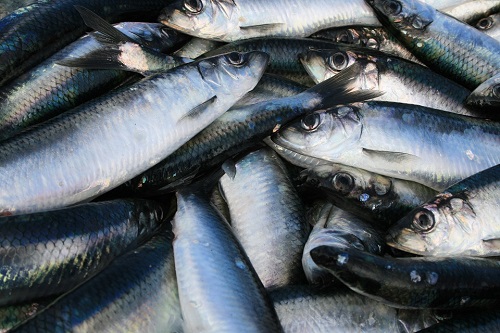News
North Sea and Icelandic herring fisheries receive ICES catch increase recommendation

The International Council for the Exploration of the Sea (ICES) has released advice for herring in both the North Sea, Skagerrak and Kattegat, and eastern English channel (autumn spawning); and in the Iceland Grounds (summer spawning); raising the available catch for both in 2024.
According to ICES, fishing pressure on herring in both regions is currently below the maximum sustainable yield. The catch advice for the North Sea area suggests that when a maximum sustainable yield approach is used, the catch should be no more than 532,166 metric tons (MT), a 28 percent increase from the 414,886 MT suggested in 2023.
The total suggested maximum sustainable yield for North Sea herring is also the highest it has been since 2016.
Countries that fish for North Sea herring have been setting agreed total allowable catch (TAC) to levels below scientific advice, and the species maintains Marine Stewardship Council certifications. For the 2023 season, the TAC was set to 396,556 MT, well below the 414,886 MT suggested maximum.
Advice for the Icelandic management area for the 2023-2024 fishing season, meanwhile, is also increasing. ICES is suggesting a catch of less than or equal to 92,633 MT, up 40 percent from the 66,195 MT suggested catch in 2022-2023. That makes the advice for the Icelandic Grounds summer-spawning herring the highest since 2008-2009. Historically Iceland has set its TAC in accordance with ICES advice.
The successful management of the species in the North Sea, where in 2022 it was fished by nine different countries, is in contrast to the Northeast Atlantic mackerel and Atlanto-Scandian herring fisheries. The mackerel fishery lost its MSC certification in 2019 and has yet to recover it. Recently, the U.K.-based nonprofit organization Marine Conservation Society downgraded the fishery to an unsustainable choice after coastal states once again failed to meet self-imposed deadlines on reaching catch agreements in line with ICES advice.
The troubles with the fishery was also a central basis for the formation of the North Atlantic Pelagic Advisory Group, a group that retailers established to push for better management of North Atlantic pelagic fisheries.
On 8 June, the U.K. and Norway released an agreement placing calling for a TAC of 782,066 MT for 2023, split between Norway's 31.95 percent share of 249,870 MT and the U.K.'s 210,814 MT, or nearly 27 percent of the TAC. However, Norway will deduct 24,635 MT of mackerel, or 3.15 percent of the TAC, from its total this year.,
Meeting in London, the delegations from the U.K. and Norway agreed to allow a one-year carry-over of up to 10 percent of unused quota to 2023, and agreed that for 2023, Norway can catch up to 135,141 MT of mackerel in the U.K.'s exclusive economic zone.
The U.K. delegation said it will continue negotiations on catch limits for mackerel, blue whiting, and Atlanto-Scandian herring for future years, with the goal of setting the TAC for each stock in line with ICES advice. It said an assessment on whether the current TACs have been set consistent with ICES advice "will be published on the conclusion of the UK’s annual fisheries negotiations."
Atlanto-Scandian herring lost its MSC certification in 2020 for similar reasons to mackerel. In March, the European Union and Norway signed three bilateral agreements resulting in a herring quota and fishing-access exchange for the species.Categories
Contact Us
Contact: Yang Lee
Phone: +86 18765203281
Tel: +86 18765203281
Add: No.435, Lanzhou East Road, Jiaozhou, Qingdao, China 266000